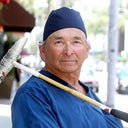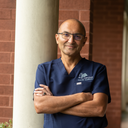A #facelift is a surgical procedure designed to remove the major folds and wrinkles that form on our faces with age. Gravity, sun damage, smoking, living in a dry climate, and a variety of factors contribute to the aging process of our faces. Facelift techniques vary from patient to patient to give each person a procedure tailored to produce the best possible surgical result. A facelift will smooth out major folds and #wrinkles, #tighten the tissues beneath your skin, remove #sagging and excess skin. A facelift can also reduce excess skin around the #neck and #jawline. There is not just one facelift procedure, but a whole range of facelift procedures. These different techniques have been developed over the years, involving different incisions and lifting the skin to varying degrees. A facelift may also involve the tightening of certain muscles and tissues, or liposuction of areas such as the jowls or chin.It is important to understand that facelifts are meant to remove major folds and wrinkles, not fine wrinkles. A facelift which removes every line and fold would be too aggressive and would result in an unnatural result. Fine lines and wrinkles are better addressed by skin treatments such as chemical peels or microdermabrasion, which we also offer at our office. Incisions vary depending upon whether the patient is male or female, the hairstyles, hairline, age, previous surgery, and other factors. Generally, the #incision starts in the temple, in front or within the hairline. It continues in front of the ear, sometimes partially hidden within the ear. It then goes under the earlobe, behind the ear fold, and ends within the hairline or at the hairline behind the ear. The newer, shorter scar #techniques, which do not include scars in or by the hairline, can be used for most patients. Frequently another small and hidden incision is made under the chin in a natural skin fold. This allows fat removal and tightening of the platysma muscle in the neck if required.During your #consultation, your skin texture and elasticity, as well as your underlying skin structure and your facial bone structure will be evaluated. Based on this evaluation, your board certified plastic surgeons will create a custom surgical plan, detailing specific techniques and recommendations to meet your goals. In doing so, he or she should be sure to have a full understanding of what results you expect. If you are not a #candidate, your surgeon can make other suggestions to address your concerns and objectives.

















